Stupid lawn is turning ugly red/brown color HELP before my wife kills
Roberto Irwin
2 years ago
last modified: 2 years ago
Featured Answer
Sort by:Oldest
Comments (8)
krnuttle
2 years agolast modified: 2 years agoRoberto Irwin
2 years agoRelated Discussions
Silver Arrow stem is turning brown
Comments (25)Hi Nancy! Thanks for thinking about my problems and responding! Of course everything new helps! I'll go over what you wrote in the order you wrote it so I don't miss anything...... :) No need to apologize, I understand the idea of these help forums and each of us have our own lives and duties which come first so I'm always appreciative of help... I noticed that this site does not have "awards" or "points" for successfully answering questions or having members voting on those answers, just a thought that people like to work for rewards as well.. maybe getting a "leaf" for a good/best answer??? just a thought.. (1) Yes, I put them in the same light as the mature plants, that was easy enough to do, but I did notice when I took the photo (thanks for the suggestion it pointed out several things to me that are not visible on photo, but one that is---is why did the little pot have lighter leaves than the bigger pot? Most of the plants have the beautiful dark and silver leaves while the little pot has lighter leaves..... my answer is that it is smaller so its up "higher" on the stand, closer to the source of light and more in sunlight more hours each day than the darker ones (which I guess in the plants tropical natural state), they love the floor of the jungle! not the upper reaches so the plant lightened it leaves in color versus the lower plants! Well, I certainly will keep most of them lower down, but limited space there, so I put the stems up higher for now until I see roots and leaves. (2) thanks, maybe I'll start a new posting with that photo now that I have it here on computer easily posted, so I can just ask: "can you identify this plant"? (3) Sorry about the quality of the photo I had to eventually throw out that plant as it became sickly and fell over, so I don't call that mineral deposits. It seems to come and hit a particular plant but not the surrounding plants, so if its mineral deposits then why is it doing it? (it appears on others and now I cut it out or discard early). (which is my hidden fear that what if it attacks one of the plants I can't easily replace or discard so easily?) About viewing it in person I looked at your page, I'm all the way East, approx. 2,900 miles, so visiting to view it could be quite a "road trip".... (4) Good thoughts and ideas.... Lots more information I could give you about the plants and their "history". I have had them for 30 years in same exact location (next to some of the "lighter" color aglaonemas plants (some of this refers to your comments later on as well)... I originally had lots of algae growing in those bottles. When I separated the plants after 30 years it was due to the appearance of the gelatin fungus----- I had originally had algae lots of it! in the water bottles with no Deco fertilizer ever! They just have plain water, left to air out and get to room temperature before its used--no chlorine here so none in tap water--- I used to wash out algae when it got too thick or made the bottles "ugly" as guests noticed it...and preferred the clear water. The gelatin mold came just to this species of plant--no where else....algae is either present or not in other bottles, they are all growing or not with or without the algae.. sigh.. that is why this geletanous fungus is so puzzling and they at the garden shop wanted to see a photo too... (4a) I never used 10% bleach, but if it does not harm the plant itself and I can clean out the algae too(??) as well as the gelatin stuff then I'm certainly willing to try it (I will only do "one" plant first as a test to see what happens as I don't want to lose both of them if I do it wrong. (4b) These corn plants have a tropical like stalk, more like Grandparents' pet huge "palm tree" which I wanted to bring back but no one would move it up north, so unfortunately I don't have a "potted palm" (remember old movie "Mr. Roberts"?) but I don't think a cutting will work on this style of plant as only one very slow growing stalk per plant. Still have the same number of plants as I took up here... so I don't know how they propagate, no flowers ever, no rootlets, so wondering what it is--species/name before I do anything like trying to cut it..... my own dividing up the plants was an emergency idea to save it from having all in one huge pot and losing it all to some disease.... (4c) about your "question" --yes in the photo, its not an official Deco pot. I have plenty of stones still in original bags, but what I have lost over the years is the pots as my collection expanded, but no more pots were available from stores/online (some people still sell rocks/fertlizer, but I got plenty of those, missing the pots) so of course I was "improvising" there with some of my smaller ones (and the cuttings I just did will end up in those "double" pots I created for the Deco plant mixture----So In the end when I took that photo last I had the water all the way up to "Drown" the fungus I thought, usually I keep it lower since the pot has no "little window" (4d) Didn't know I was doing "water culture". I just had them in water bottles. For years I used water with fertilizer (not Deco brand) to fill the water bottles. They grew and I was happy the plants were happy. But then I read about the mineral salts so I stopped all fertilizer as I saw other people I know, watering plants in water bottles/soil plants using tap water from the tap! and they were growing healthier than mine with fancy fertilizer! So I just switched one year a number of years ago and plants have been growing fine ever since.... (4e) Now about the algae suggestion....Yes my plants in regular glass bottles/pots, have algae! The Deco ones do not I guess due to stones/less sunlight entering the small window, etc--washing out with water for the pots I can lift up. So except for "Guests" who complain, I don't mind the algae...its green isn't it? Anything green is growing, better than brown or white or "gelatin" colored... So I guess with your words of advice, I'll wash out the algae a bit less often and let them help the plants grow. The Deco plant had fuzzy mold on it and also I get it if I transfer water plants (minus the algae---I'll try the 10% bleach next time) from water culture to soil. (4f) Sorry if I'm giving too much information, but serious problem of mosquitos here, and tiny tiny tiger mosquito gets through screening/flies and bites in the daytime and inhabits the smallest amount of water, so they can get inside the home and reproduce and bite all day/night! inside! I use "dunkins" Mosquito Control for the water plants to try and stop/control them, but with so many water plants I've been forced to move many over the years the old water plants into soil culture--- (I use "Bontone" rooting Powder and follow the instructions from the garden shop person who is retired now as I mentioned earlier) but the white fuzzy fungus/mold is killing off my attempts to move most or "all" of my plants out of water into soil. This does not effect the Deco plants as the water level is always below the stones so no mosquitos ever or need for "dunkins". Again the reason I must abandon water plants generally, is that "dunkins" have only about a month of useful life and when I hear the sounds of mosquitos flying around and know they can carry "West Nile" disease inside the home as well, Its time to get as many water plants out to soil but having difficulty making that transition!...Without that mysterious fuzzy white mold occurring!. Again, the monthly depots of "dunkins" is a real chore as I have a "forest_of_houseplants" of many kinds, many cuttings and propagations over the decades.... sigh... its a "jungle" out there! as a television song goes.... I hope I did not write too much for you and others who read this, just trying to give as much information so I get an accurate response to all my problems....probably should divide this posting into several as "Silver Arrow stem is turning brown" no longer really defines this thread, and the name is in error, but they don't let you change the name of a post once you start a thread.. Thanks again for all your suggestions and help Nancy! I will wait until you reply (no rush here or upon you) ---before I do anything in case you have suggestions depending upon what Information I just added.... Best wishes..... Forest.......See MorePond is red and brown color
Comments (19)Hi Lynn, First of all: Congratulations! As best I can remember this is a first for this question!!! Maybe others can recall questions about iron bacteria but I cannot. Sandy has put her finger on part of the problem: we need additional information in order to provide advice. I will confess that I dont think I have any answers but I have a few half-baked ideas that might indicate what is going on. At this point it would appear that you are pretty convinced that you have iron bacteria and not something like Didymo, more commonly known as "Rock Snot" - IÂve listed a website below to provide further information. The characteristic oily sheen and orange deposits on surfaces is probably the best diagnostic although, as they say, a picture would be worth a thousand words! You didnÂt indicate what your water source is for you pond. Is this a municipal water source or a well or is it naturally fed by spring or stream? The reason for this question: municipal sources are very unlikely to provide any iron in the water. Other sources: older houses sometimes have an iron nipple connecting copper pipes to faucets - it was a "code thing" many years ago but leads to iron release in the water, staining of fixtures in the bathroom, etc. If you are on well water (and that is what you are using to fill your pond) then your most recent water analysis should indicate the presence of any iron - if you havenÂt had one run recently it might not be a bad idea (donÂt bother if itÂs municipal). Check the pH and also the alkalinity of your pond water. You can always dump in 4-6 cups of sodium bicarbonate - baking soda - to lock the pH and improve the alkalinity. The only reason I mention this is to keep any a potential for pH crashes happening - something that can sometimes be tied in with sulfur and iron utilization by bacteria. Unlikely, but why not prevent it anyway? YouÂve not indicated whether your bog area is tied directly into you pond or if it is just physically nearby. Did you construct the bog area? If so what did you use. I have a bog area that is directly tied into the pond (through diffusion, no direct flow). It was filled with a 50-50 mix of sand and peat moss. No iron problems. Since you apparently have no liner what is the clay/soil like? Your personal page information doesnÂt indicate where you live but if you have "red clay" or similar soil structure that could potentially be the source of the iron. Alternatively spring-fed systems can also be high in iron. IÂm assuming youÂve checked for any rocks or decorative iron "things" that might be in or around your pond. WeÂve got a couple of frog sculptures that appear to be greenish-copper color but are really made of cast iron and coated to look as if it was aged copper. So now what. Horton has pulled a very nice website that gives a description of iron water chemistry. Basically what I THINK you are dealing with is referred to as pore-water chemistry. If you had the apparatus and instruments to examine the first inch or two of the soil layer in your pond (or, for that matter, any deposits accumulated in the bottom of the pond) youÂd find that they are probably anaerobic (no oxygen) after youÂve penetrated the surface just a few millimeters - say a 1/4 to ½ inch. Yep, it gets depleted that fast! In that environment, as indicated in HortonÂs Wikipedia reference, iron is "solublized" and is able to diffuse to the surface. Right at the surface of this mix bacteria and oxygen increase in concentration with the result the iron is oxidized to the ferric (+3) state and subsequently precipitates. IF the iron source is in the soil lining your pond then I suspect there is very little you can do about it other than install a liner. Increasing the oxygen levels in your water will help since higher dissolved oxygen levels will cause the iron precipitation to occur deeper in the surface of the pore water/mud layer. Having increased flow through the pond will help in that it will also help promote higher concentrations of oxygen at the mud/water interface. The conventional methods for control listed for wells (typically using bleach) - probably something youÂve already come across - wonÂt really work with your pond since it is very likely to become rapidly repopulated with the iron bacteria. Plus it would mean cleaning everything out of the pond, etc. The aquasphere ball that you purchased from GardenerÂs Supply has nothing to do with your problem. If this is similar to what they were selling a few years ago - back then it was a plastic model - it was nothing more than a way of holding barley straw in your water. Back then you could pry it apart, refill with barley straw and re-use it! Now, of course, theyÂve supposedly made it more eco-friendly by making it out of a corn-based product which ...."naturally" ..... means you can only use it once then have to buy a new one! I probably ought to drive up there and double check (their website fails to really tell you much of anything) but IÂm pretty sure it is just a fancy container for barley straw. I wish I could think of something that would be more helpful. IÂd consult a book on alchemy if I thought itÂd help. I even thought of having Horton run around naked in his backyard at midnight baying at the moon for three nights in a row (itÂs the strongest incantation I could possibly imagine!!!) but doubt anything would really help other than what has already been discussed. But thank you for bringing a new question to the table! ÂDavid...See Moreplease emergency help! 1st-time gardener-killed tree rose???
Comments (30)Hi, everyone! great news is that the Rosarian couple were very nice. I actually tried calling them last night but couldn't get through because they had their fax machine on. Then tonight they explained that they couldn't return my call because the number I had left them had been cut off by their answering machine. They too have not grown tree roses because like Karl had feared, rose trees do terrible in Kansas. Stupid me should also have thought far ahead about our tornado problems as well. I didn't think about this issue before the terrible winds this past weekend. Flower2sew, in Overland Park we got hit real bad. There is still debris from knocked over light poles on Hwy 69 from people crashing from the ice... But the snow lasted just one terrible day, it was very thick snow,and we were blasted with both ice and snow at once and in some parts of Overland Park, the cable lines and phone lines were down ...then argh, it shot up to near 60 degree warmth right the following day, then dropped down again the following evening. The rosarian couple agreed that they would never leave out the tree roses at this point because of last weekend's extreme swing of temperature (including this week) but they too felt I really needed to speak to a Master Rosarian, so they gave me the emergency helpline for the Rose Society. The nice rosarian couple I spoke to explained that they themselves have never grown tree roses because of how erratic Kansas weather can be in the spring and they said that the people they know who had rose trees all had either greenhouses or would go to a nursery and "rent" out a space for the winter. In other words they wouldn't know how to advise me on how to keep my roses indoors in my particular situation. They did feel that since my rose trees still have buds sprouting, that keeping them in a completely dark, cold, poorly insulated garage at this point is a question that only a master rosarian could answer. It is a tough call because no sane person/gardener would ever be in the crazy predicament that I am in now... I am doing crazy stuff like lightly spraying my roses with warm water in the morning and when I come home, then again before going to bed to keep them as close to a greenhouse effect and reducing my house temperature from 68 degrees to 65 so that I don't shock the roses when I bring them outside to 58 degree sunshine (but that makes me super cold indoors and I end up having to wear a few layers of clothing in the house and shivering under the covers when I try to sleep LOL). So hopefully I can reach the helpline before I get "outta control" and do more crazy outta control guesswork. Anyway, thank you EVERY One and All for your help and ongoing support! Hugs to each of you... P.S. forgot to say that to me the membership dues for the American Rose Society is very reasonable, and wouldnt have hesitated for a second had I not been so broke from all the training with Eluane and house payments but in due time if I can just make the baby steps and get both trees to survive....See MoreHELP! Asters turning brown!
Comments (31)Aunt Lou, here's a clip from the link I left above: "Severe powdery mildew infection will result in yellowed leaves, dried and brown leaves, and disfigured shoots and flowers. Although it usually is not a fatal disease, powdery mildew may hasten plant defoliation and fall dormancy, and the infected plant may become extremely unsightly." My mums look horrible right now. It bloomed early, and looked fine. When I got back from vacation in early Aug. I could see it had pm. I cut many of the stems back because the buds were affected too. Here's a description of aster yellows: "The first symptom of the disease is vein clearing, the loss of chlorophyll or green pigment in the leaf veins. This is followed by yellowing of newly formed leaves, sporadic bushy growth, erect growing habit, and stunting. Stems and flower stalks may be numerous and spindly. Flowers often remain green and become distorted. Seeds and fruit do not develop. Specific symptoms vary with the kind of plant. The leaves of infected carrots grow in tight bunches. The inner leaves are yellow and stunted, while outer leaves turn rusty red to reddish purple. The roots are bitter, stunted and deformed, with tiny hair-like roots growing all over the main root. Infected glads may have thin, weak, yellow leaves, and the flower spikes may be twisted and deformed, while the flowers remain green. The whole plant is generally stunted and spindly, and the top is often killed. Asters have stiff yellow growth with many secondary shoots and are stunted. In warm weather, symptoms are more severe, and appear more quickly. At 55 degrees or less, plants may be infected without the symptoms being obvious. " Some years can be really bad for fungal problems, the weather and plant stress are 2 things that can make it worse. Like Loretta mentioned above, aster yellows deforms the whole plant, including the flowers. Kat...See MoreRoberto Irwin
2 years agoRoberto Irwin
2 years agorifis (zone 6b-7a NJ)
2 years agodchall_san_antonio
2 years ago
Related Stories
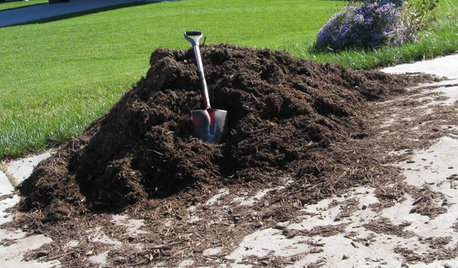
FRONT YARD IDEASBefore and After: Front Lawn to Prairie Garden
How they did it: Homeowners create a plan, stick to it and keep the neighbors (and wildlife) in mind
Full Story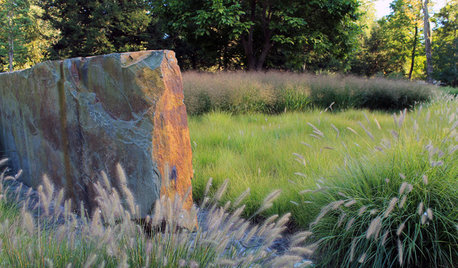
EARTH DAYThe Case for Losing the Traditional Lawn
Work less, help the environment and foster connections by just saying no to typical turf
Full Story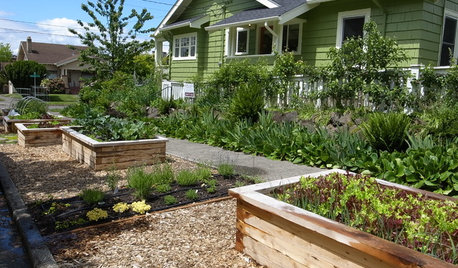
BEFORE AND AFTERSSee 6 Yards Transformed by Losing Their Lawns
Wondering whether a turf lawn is the best use of your outdoor space? These homeowners did, and they found creative alternatives
Full Story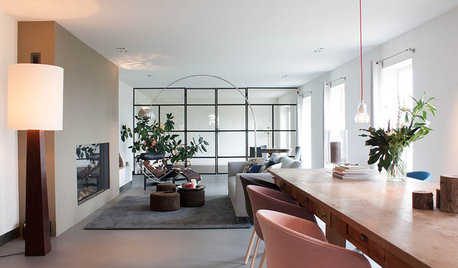
HOUZZ TOURSMy Houzz: Turning a Netherlands Barn Into a Country Home
Once a place for chilling milk, this Dutch home now lets the owners chill out in easygoing comfort
Full Story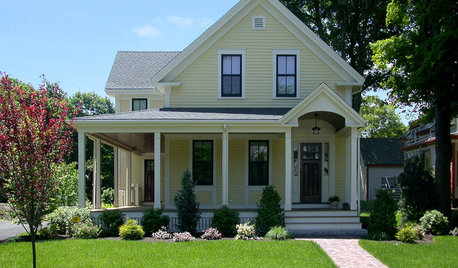
SELLING YOUR HOUSE10 Low-Cost Tweaks to Help Your Home Sell
Put these inexpensive but invaluable fixes on your to-do list before you put your home on the market
Full Story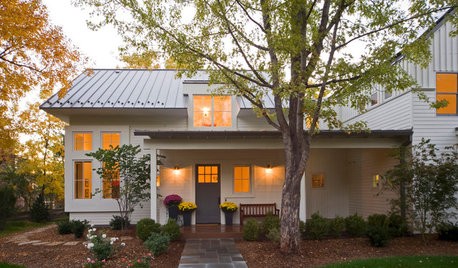
SELLING YOUR HOUSEHelp for Selling Your Home Faster — and Maybe for More
Prep your home properly before you put it on the market. Learn what tasks are worth the money and the best pros for the jobs
Full Story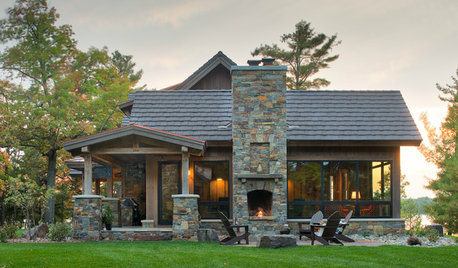
ROOFSWhat to Know Before Selecting Your Home’s Roofing Material
Understanding the various roofing options can help you make an informed choice
Full Story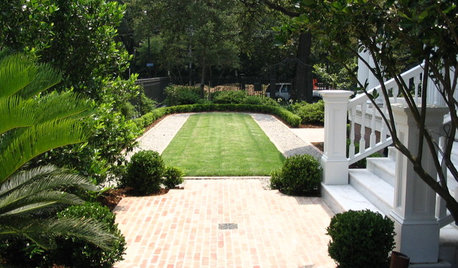
GARDENING GUIDESHow to Plant a New Lawn From Sod
Take the quick-start route to turf with sod; these installation guidelines will help ensure a healthy and long-lasting lawn
Full Story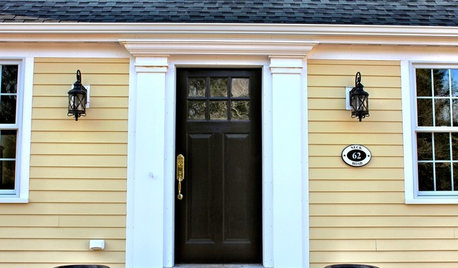
LIFE7 Things to Do Before You Move Into a New House
Get life in a new house off to a great start with fresh paint and switch plates, new locks, a deep cleaning — and something on those windows
Full Story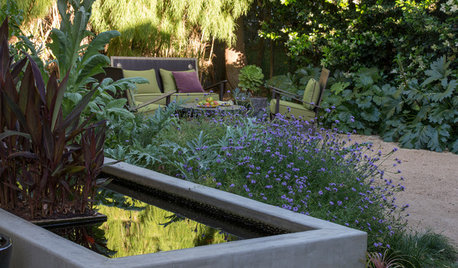
SAVING WATERHouzz Call: Are You Letting Go of Your Lawn?
Many facing a drought are swapping turf for less thirsty plantings. If you’re one of them, we’d like to hear about it
Full Story


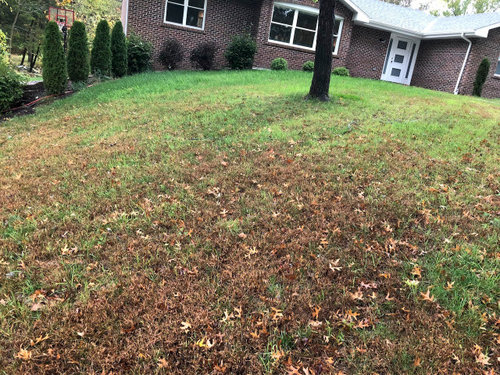
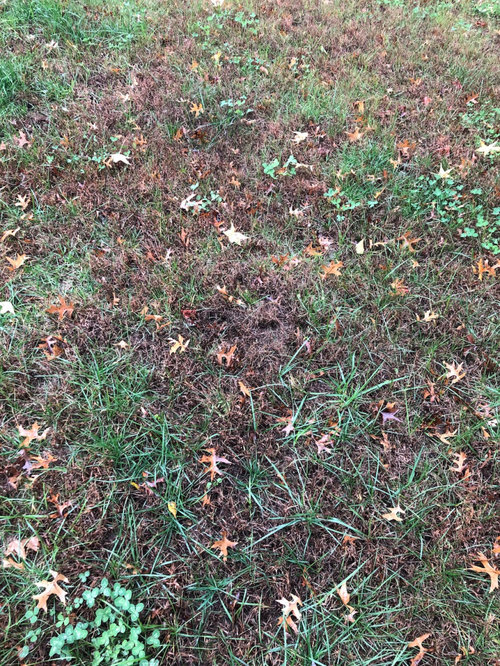
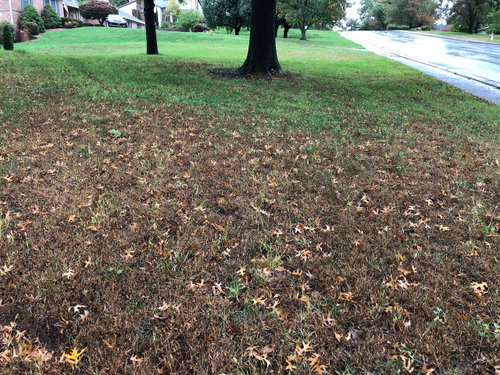
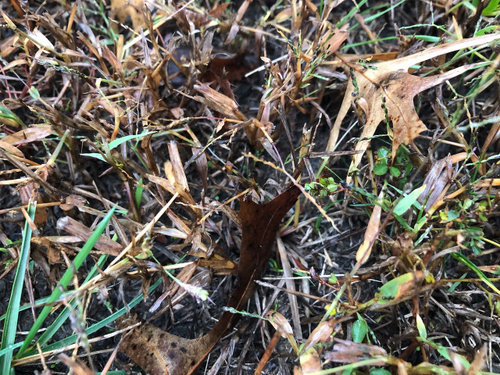


dovetonsils